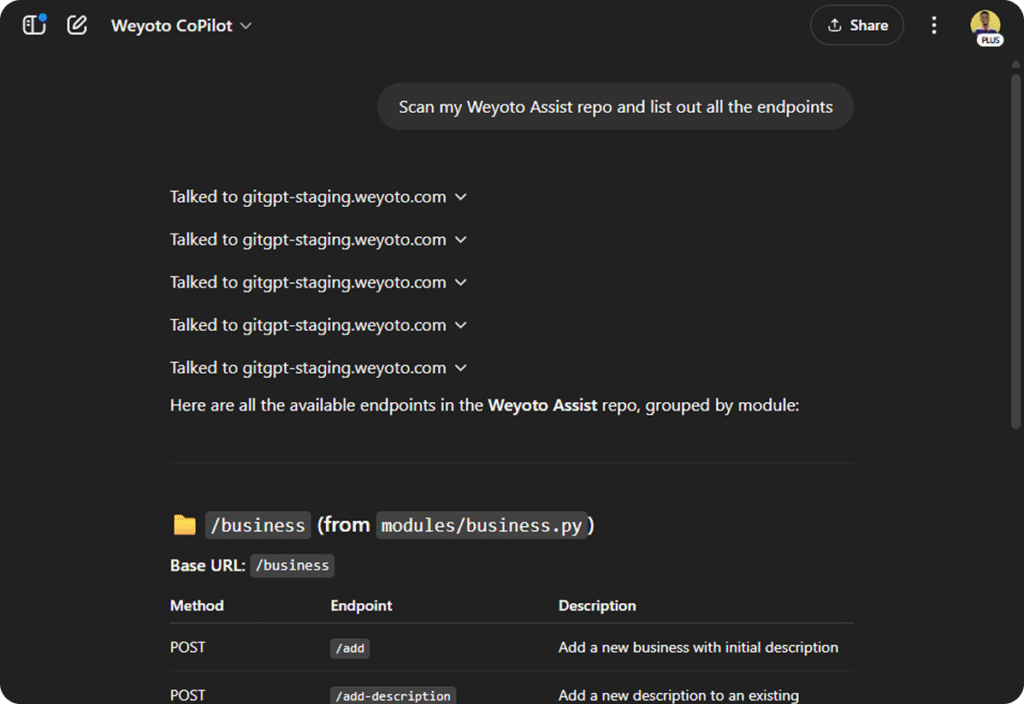Weyoto’s Top 5 Coding Tools Every Developer Should Use in 2025
In the fast-moving world of software development, the right tools can be the difference between a great product and a failed sprint. At Weyoto, we work closely with developers, startups, and AI builders — so we know what works, what scales, and what empowers dev teams.
Modern development isn’t just about writing code — it’s about how quickly and confidently you can build, test, deploy, and iterate. In a landscape dominated by AI-assisted tools, microservices, and rapid MVP cycles, choosing the right coding stack is crucial.
Here’s our carefully selected list of the top 5 coding tools for 2025, ranked by speed, simplicity, and usefulness in real-world projects.
Whether you’re building a side project, launching a SaaS, or deploying GPT-powered apps, these are the platforms we trust, use, and recommend.
How We Chose These Tools
We focused on tools that:
- Offer exceptional developer experience (DX)
- Are actively maintained with clear documentation
- Solve real productivity problems
- Work well for individuals and small teams
- Can scale without major rewrites
This isn’t a theoretical list — it’s based on tools we’ve used ourselves or helped implement in real dev workflows.
5. Resend – Best for Sending Dev-Friendly Emails
If you’ve ever wrestled with SMTP servers or struggled to format a transactional email that actually lands in the inbox — Resend is your fix.
Why we love it:
- Clean Node.js SDK and API for sending emails
- Modern templates and responsive design
- Built-in email logs and debugging
- Great developer experience (DX)
Use cases: Sending password resets, notifications, onboarding flows, or GPT-triggered updates — without spinning up your own mail service.
Common challenge solved: Avoiding deliverability issues and simplifying dynamic email generation from code.
Website: resend.com
4. Cloudflare – Best for Edge Deployment, Security & Speed
Cloudflare is more than just a CDN. It’s now the backbone of modern app security and performance. Their developer ecosystem (Workers, Pages, R2) lets you build full apps at the edge.
Why we love it:
- Fastest global CDN and DDoS protection
- Deploy full-stack apps with Cloudflare Workers
- Custom rules and bot mitigation
- Free DNS, SSL, and caching that just works
Use cases: Protecting apps from attacks, speeding up global asset delivery, or deploying microservices without heavy infra.
Hidden gem: Cloudflare KV + Durable Objects — great for stateful edge apps.
Website: cloudflare.com
3. Render – Best for Deploying Apps Without DevOps Headaches
Render is the perfect middle ground between Heroku and AWS. It’s a PaaS (Platform-as-a-Service) that lets you deploy apps, databases, workers, and static sites — with zero config.
Why we love it:
- Auto-deploy from GitHub or GitLab
- Built-in HTTPS, background workers, cron jobs
- Postgres, Redis, and more available instantly
- Honest pricing with generous free tier
Real-world usage: We’ve deployed Flask backends, Next.js apps, and long-running GPT tasks without touching EC2 or worrying about YAML.
Website: render.com
2. DigitalOcean – Best for Scalable, Budget-Friendly Cloud Infrastructure
DigitalOcean is the go-to for devs who want serious cloud infrastructure — without AWS’s complexity. You can launch droplets, databases, Kubernetes clusters, and more.
Why we love it:
- Simple UI and API for managing infrastructure
- Droplets (VMs) and App Platform (PaaS)
- Predictable pricing, no surprise bills
- Great docs and community
Use cases: Hosting backend services, training models, running cron jobs, or powering a growing production app.
Bonus: Their App Platform combines the simplicity of Heroku with DO’s infrastructure — great for GPT apps.
Website: digitalocean.com
1. Weyoto GitGPT – Best for Reading & Reasoning Over Code in Real Time

Most GPTs just guess your code. Weyoto GitGPT actually reads it — live from GitHub. It’s a custom GPT integration that connects directly to your real repo and lets you query, understand, and debug your codebase using AI.
Why we built it — and love it:
- Scans your full repo (not just summaries)
- Works inside ChatGPT via a schema & instructions
- No backend or tokens required — just connect
- Instant dev insights, error analysis, and file lookups
Use cases:
- Debugging code with AI using your actual project files
- Reviewing pull requests via GPT
- Explaining legacy code to new team members
- Answering “what does this do?” without context switching
Why it’s #1: Because it’s the tool we use every day. It turns a GPT into a superpowered teammate — one that understands your repo like a senior dev.
Website: weyoto.com
Honorable Mentions
If we could extend this to 10, here’s what would make the cut:
- Vercel – for frontend deployments and incredible dev UX
- Sentry – for realtime monitoring and debugging
- Supabase – open-source Firebase alternative
- Postman – still the best API playground
- Github Copilot – for pair programming with AI
FAQs: Top 5 Coding Tools in 2025
What’s the most important tool for AI-powered coding? Weyoto GitGPT — because it connects GPTs directly to your codebase, enabling smarter, real-time AI reasoning.
What’s the best deployment platform for solo devs? Render or DigitalOcean App Platform. Easy to start, but can scale.
How do I decide between Cloudflare and traditional hosting? If you want performance + edge logic + zero trust, go Cloudflare. For basic apps, others may suffice.
What tools help avoid DevOps headaches? Render and DigitalOcean simplify setup. Weyoto GitGPT removes debugging pain by helping GPTs reason like a human dev.
Final Thoughts
Whether you’re solo-building or leading a product team, these tools help you:
- Ship faster
- Stay lean
- Maintain focus on product, not plumbing
These are the top 5 coding tools we’d recommend to any serious builder in 2025 — with Weyoto GitGPT at the heart of smarter, AI-powered development.
Have questions or want to try GitGPT for your team? Reach out or plug it into your GPT today.
